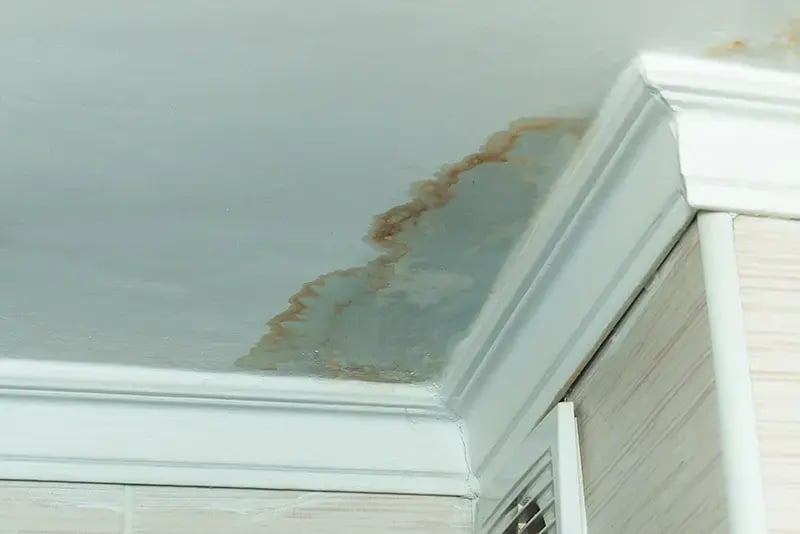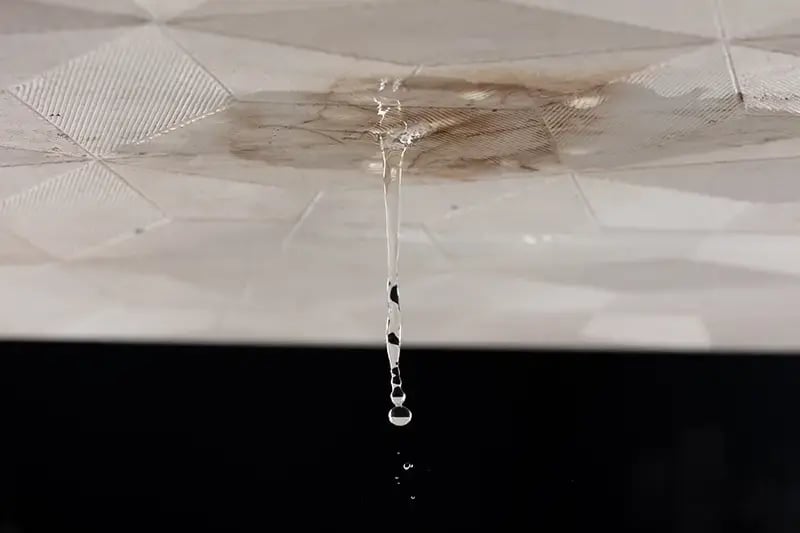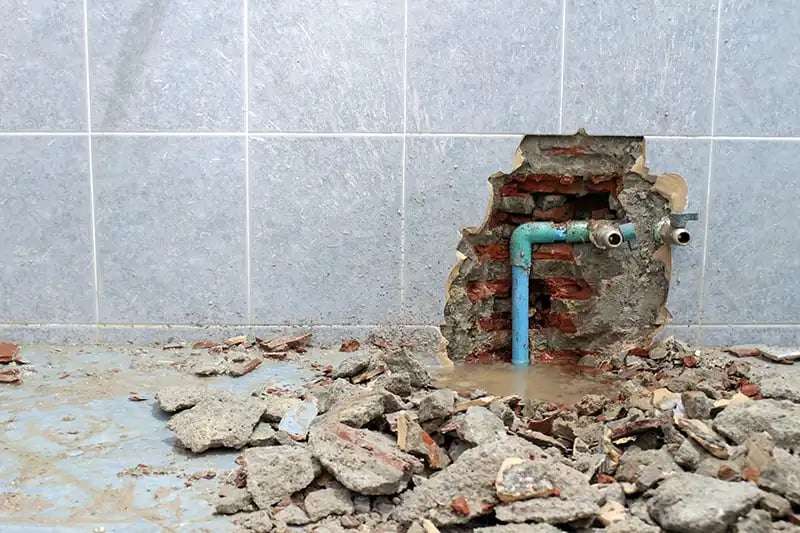Appearances matter in high-quality commercially owned and operated buildings. Clean lines, dry ceilings, and well-maintained lobbies all speak to professionalism and quality. But behind those polished surfaces, there’s often a hidden issue that no one wants to talk about: water leaks.
Leaks are common, even inevitable. Yet many owner-operators shy away from acknowledging them. Why? Because there’s a deeply rooted stigma: that a leaking building is a failing building.
But this couldn’t be further from the truth. Water leaks are seldom a reflection of poor management or shoddy maintenance, and most often the natural outcome of complex systems operating in dynamic environments.
The problem isn’t that leaks happen - it's the perception that they're caused by laziness or poor quality workmanship. But by failing to address the root cause, they won't be addressed effectively.
In this article, we’ll unpack the myths around water leaks, explain why they’re so common, and explore how a mindset shift can help to reduce long-term costs, and protect both property and reputation.

Why does the stigma around water leaks persist?
Water leaks carry a heavy social and professional weight. No property manager wants a tenant posting photos of dripping ceilings on social media. No facility team wants to admit they missed a fault in the plumbing. And no owner wants to be seen as negligent.
Three common misconceptions about water leaks
- A building that leaks must be poorly built.
- A well-managed property shouldn’t have any plumbing issues.
- Acknowledging a leak publicly will hurt the business’s image.
Some savvy building owner operators know better. But many don't. From a disconnect between the boardroom and the facilities floor, to frustration with downtime, to very real concern about reputational risk, there's a whole host of reasons why water leak damage and downtime is so misunderstood.
And when that misunderstanding leads to a lack of appropriate action, it leads to delayed repairs, rising remediation costs, and potential compliance risks. It can also lead to increased insurance costs, reputational damage amongst both your peers and current and prospective tenants, and the potential to significantly impact your bottom line.

Water leaks are inevitable - and here's why
Water leaks aren’t always the result of neglect. In fact, in many cases, they’re a natural byproduct of how buildings are constructed and operated. A deeper understanding of the causes can help owner operators to approach the issue with greater clarity and confidence, leading to better solutions.
1. Aging infrastructure
Buildings are long-term assets, but their plumbing systems don’t last forever. Pipes degrade, seals fail, and fittings corrode over time. Even the best-maintained systems will eventually show signs of wear.
2. Complex plumbing networks
Large buildings have vast networks of pipes, valves, and joints - each a potential failure point. The more complex the system, the greater the risk of failure. And with thousands pr tens of thousands of connections (many of which are tucked away in concealed spaces) it’s a certainty that something will eventually leak.
3. Environmental stressors
Temperature swings, shifting foundations, mechanical vibrations, and pressure changes all place stress on plumbing systems. Over time, this leads to cracks, loose fittings, and worn-out seals, which allow water to escape.
4. Installation & manufacturing limitations
Not every pipe, washer, or valve is perfect, even when brand-new. In new construction, components are tested to the best of the developer's ability - but real-world conditions can throw curve balls. And in existing buildings, comprehensive testing is tricky unless you're refurbishing an entire, empty building. Meanwhile, the impact of small installation errors or overlooked faults can quietly escalate to allow water to leak.
5. Human error and limited visibility
Manual inspections can’t catch everything, especially when much of a plumbing system is behind walls, under floors, or in hard-to-reach areas. Even diligent teams are limited by time, resources, and the inherent invisibility of many problems.
All these factors combine to make leaks not just possible, but probable. And that’s why treating them as an embarrassment or a nuisance, rather than a maintenance reality, is both unrealistic and counterproductive.

The hidden cost of denial
Avoiding a meaningful conversation around water leaks doesn’t just perpetuate the stigma - it also causes measurable harm.
-
Financially, unaddressed leaks lead to higher repair bills. A single leak can cost nearly $2,000 to fix. And water damage insurance claims due to infrastructure failures now cost the insurance industry more per year than natural disasters.
-
Operationally, leaks can disrupt tenant services, halt production lines, damage inventory, and require costly remediation.
-
Environmentally, the cost is even greater. The EPA estimates that nearly one trillion gallons of water are lost to leaks each year in the United States alone - a staggering waste of a critical resource.
What’s more, many buildings experience at least two leak incidents per month, according to facility managers. Yet these figures likely underrepresent the true volume, since many leaks go unnoticed or unreported.

Rewriting the narrative: Leaks are a risk, not a failure
The most effective commercial property managers aren’t those who claim to have no leaks - they’re the ones who proactively plan for them and invest in solutions that address the underlying problems.
Reframing the conversation around leaks means accepting them as part of the operational reality, and focusing on risk mitigation rather than reputation management.
Here’s what proactive planning can look like
-
Admitting the reality: Acknowledging the inevitability of water leaks doesn’t signal weakness. Instead, it signals professionalism and foresight.
-
Creating a budget line: Water leaks shouldn’t be an unplanned emergency expense. Forward-thinking owner operators allocate resources for inspection, detection, and remediation as part of their maintenance strategies.
-
Investigating fit-for-purpose solutions: Most facility teams have at least one water leak detection solution in place, but it may not be the right solution for different causes of leaks. Looking beyond the traditional solutions like pucks and ropes opens up new opportunities; and piloting a new solution across multiple use cases provides valuable real-world insight for the entire team.
-
Fostering a culture of transparency: Encourage teams to report small issues early. Empower maintenance staff to take proactive steps. Normalize conversations about water risk just like you do for fire safety or HVAC performance.
-
Tracking the data: Keep records of incidents, repairs, and trends - ideally supported by data that smart water leak detectors provide. Understand where your vulnerabilities lie and make data-driven decisions to address them.
While water leak elimination is a worthy goal, reliably catching them early is both inherently more practical, as well as reasonably achievable. Focusing on the latter approach is likely to achieve earlier and greater success, and to make a positive impact on the bottom line.

From stigma to strategy
Leaks are not an indictment of your building or your team. They're a fact of life for commercial real estate owner operators, driven by physical wear, environmental pressures, and complex infrastructure. The stigma that surrounds them serves no one.
By shifting your thinking from blame to strategy, you can manage leaks more effectively, reduce costs, and protect your buildings, tenants, and reputation. It starts with honesty - acknowledging that no building's infrastructure is perfect. And it ends with accountability - building systems and cultures that respond swiftly, transparently, and professionally.
In the end, water leaks aren’t something to be ashamed of. But ignoring them? That’s a risk you can’t afford.